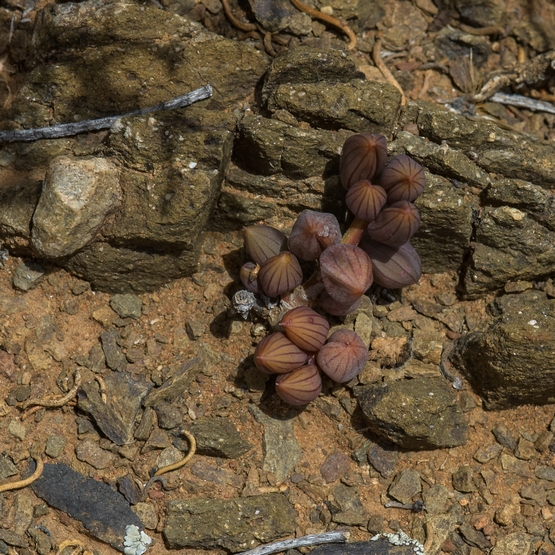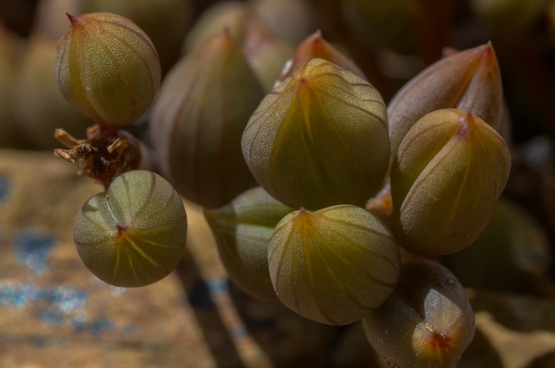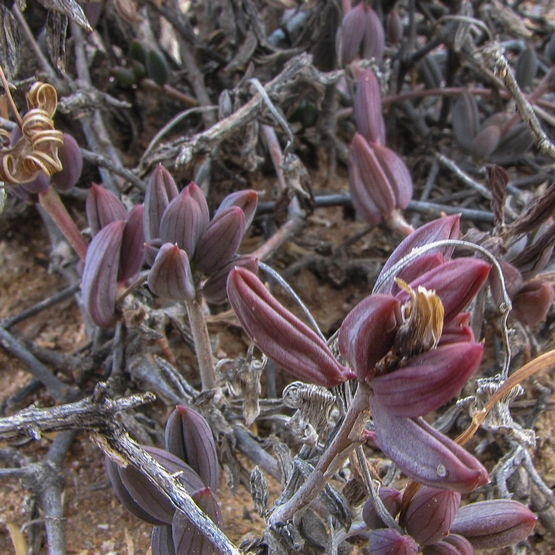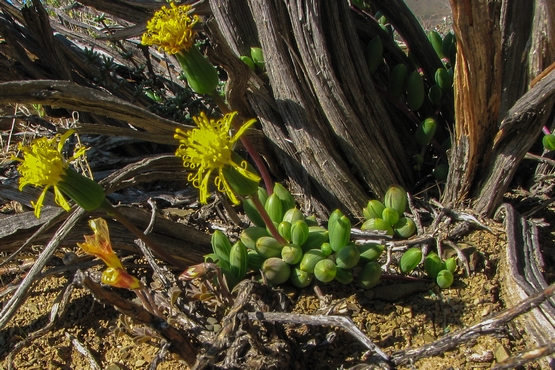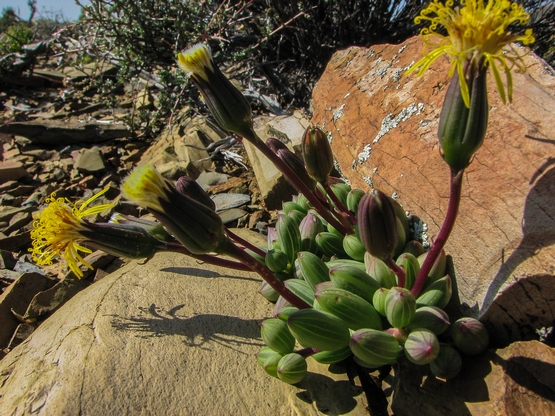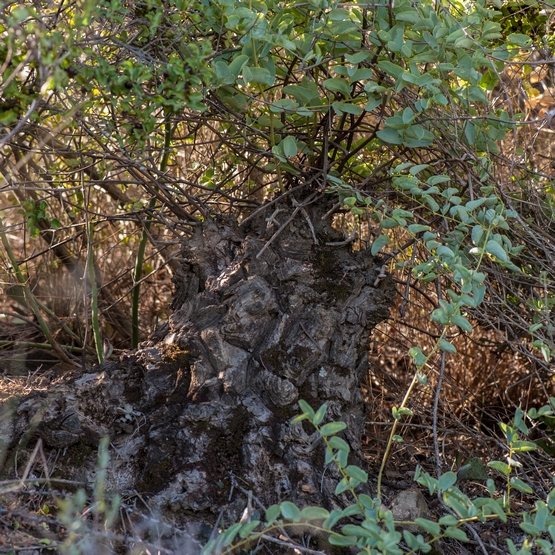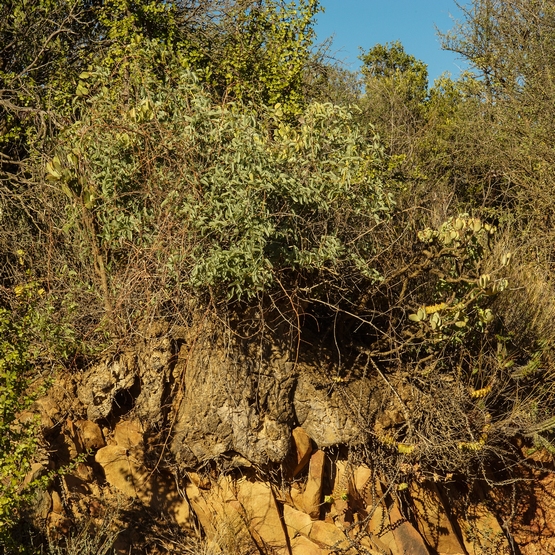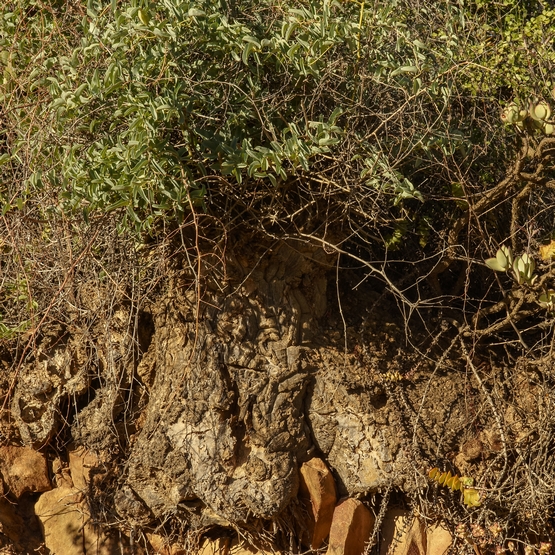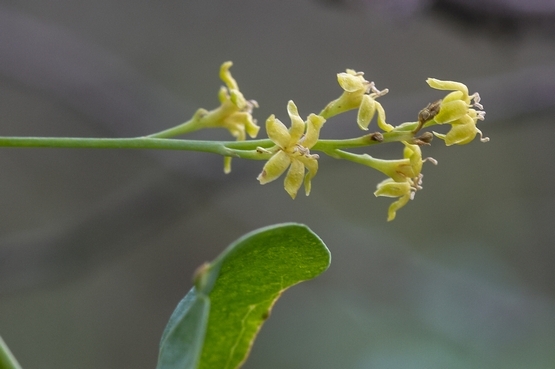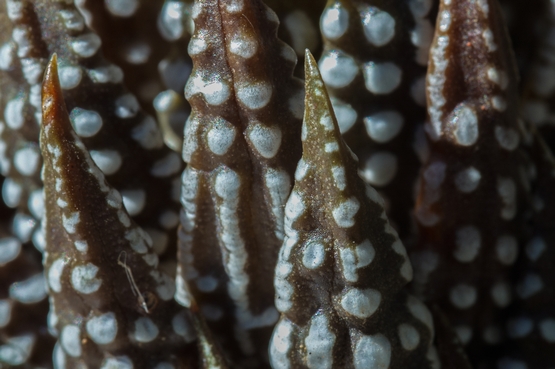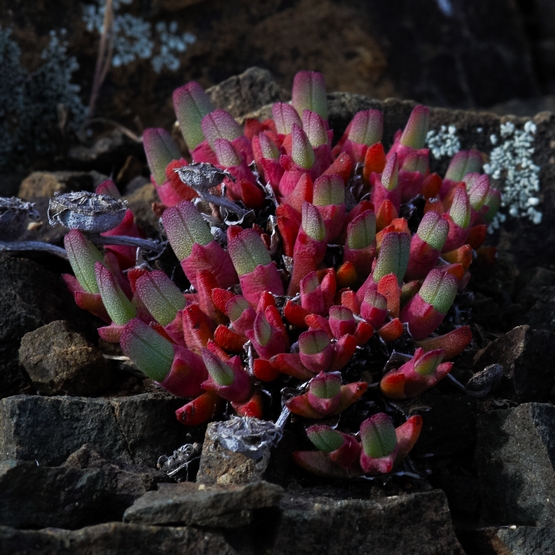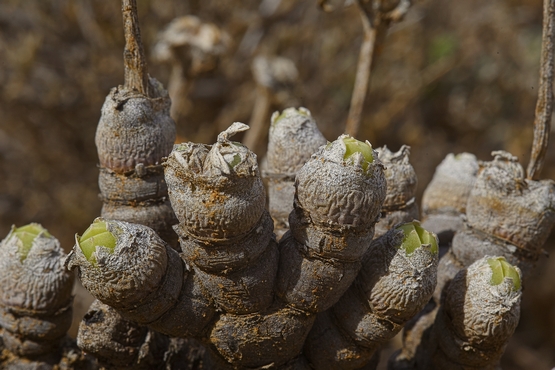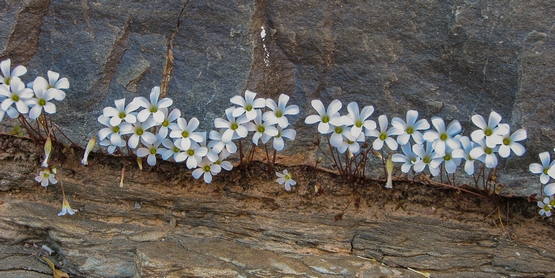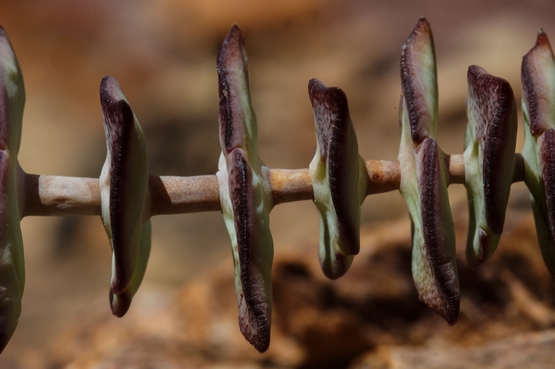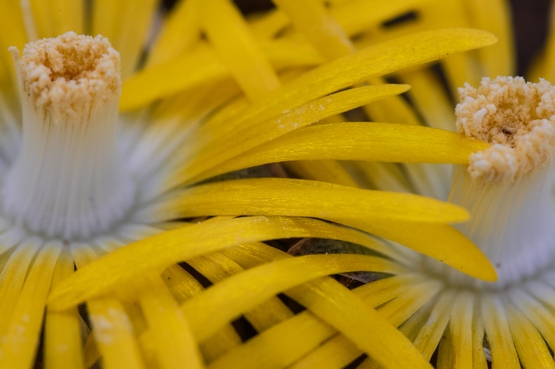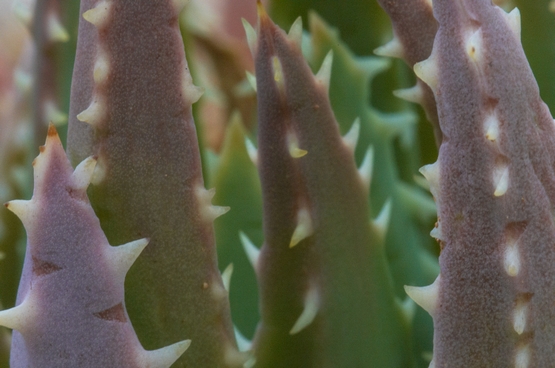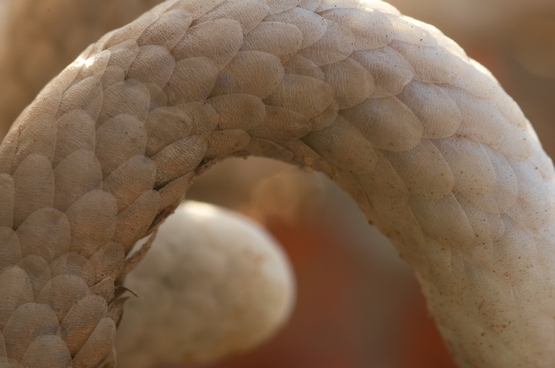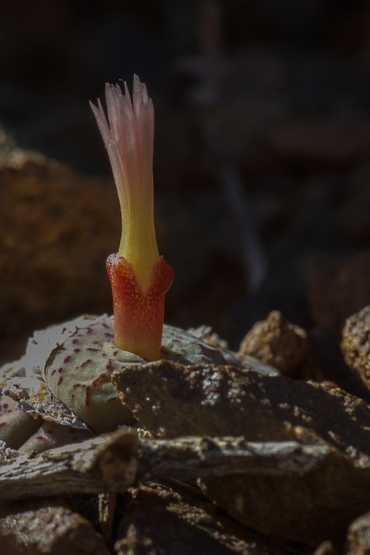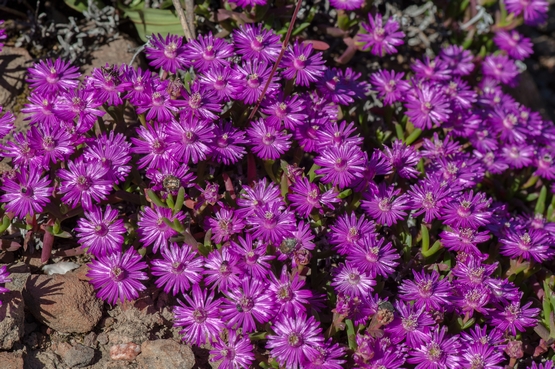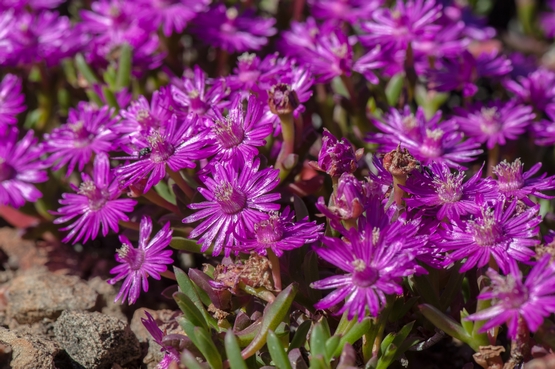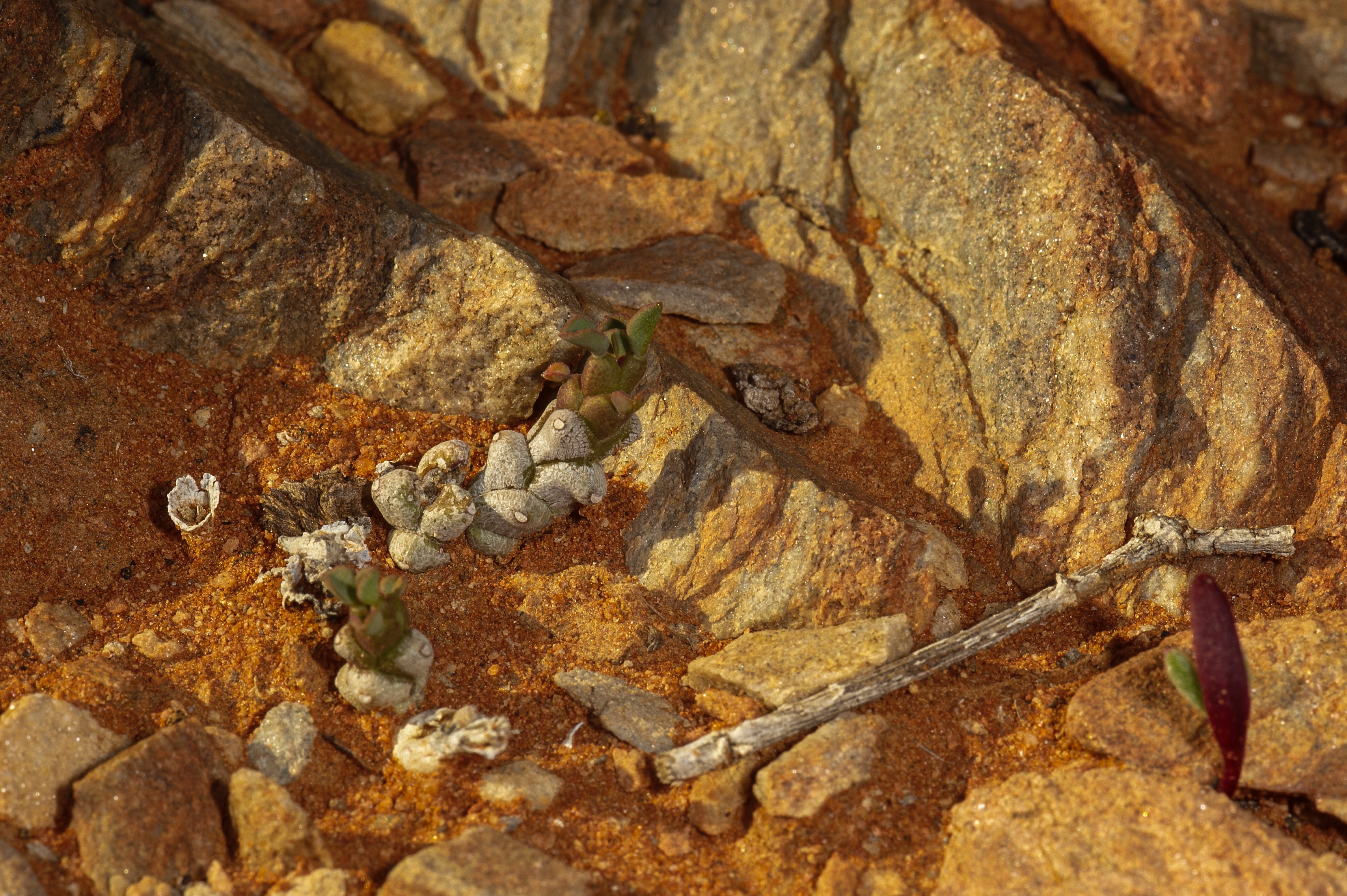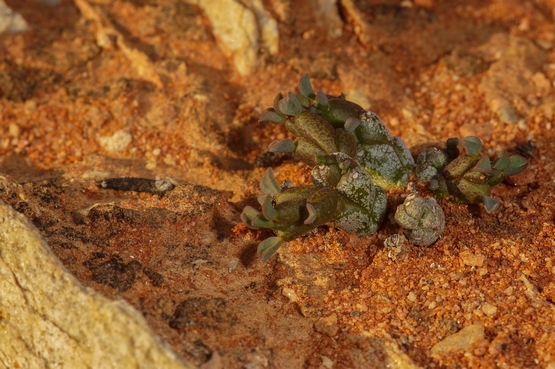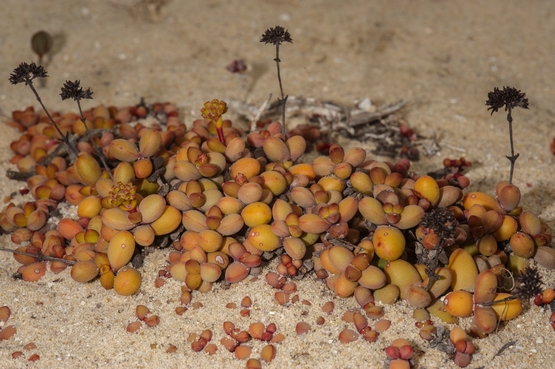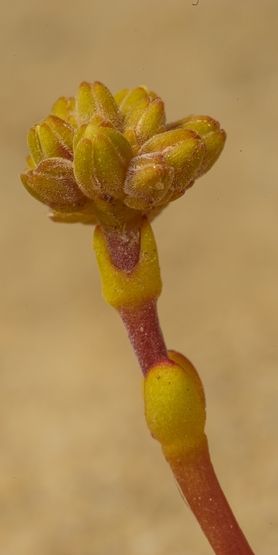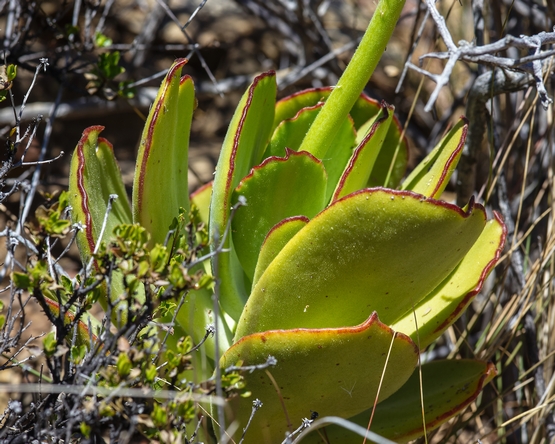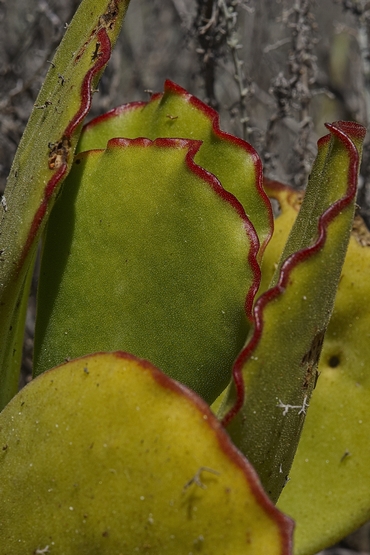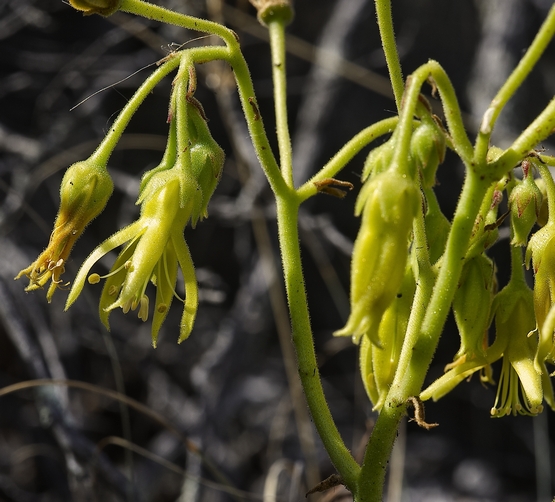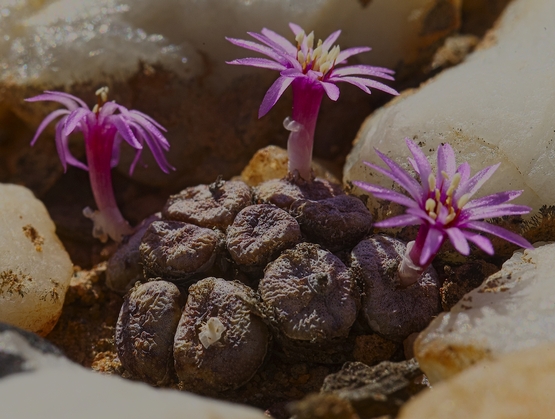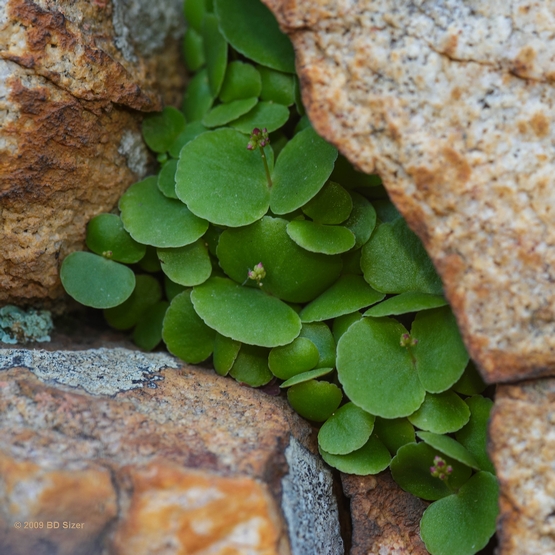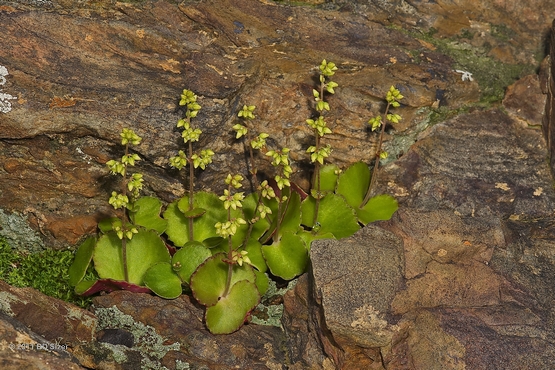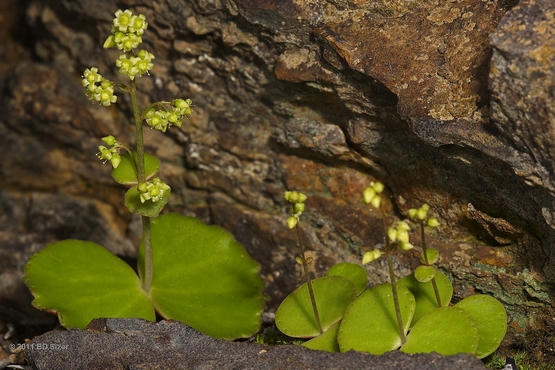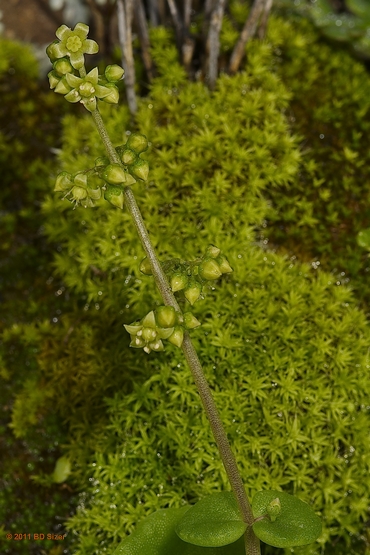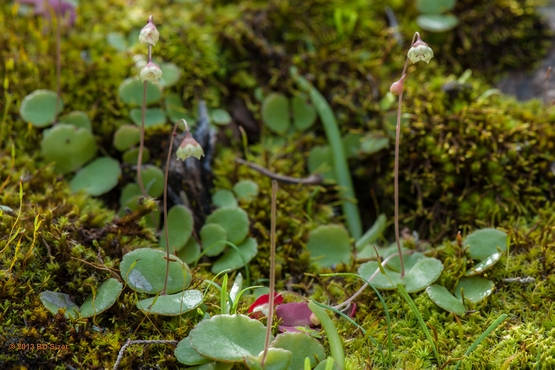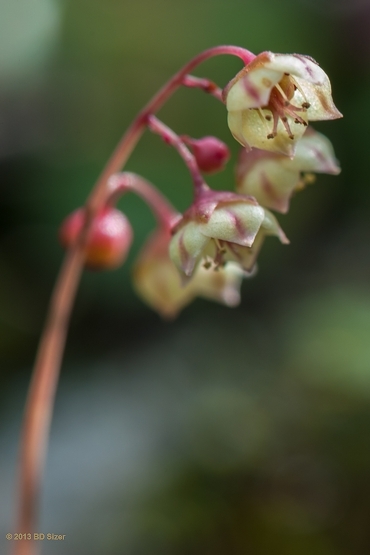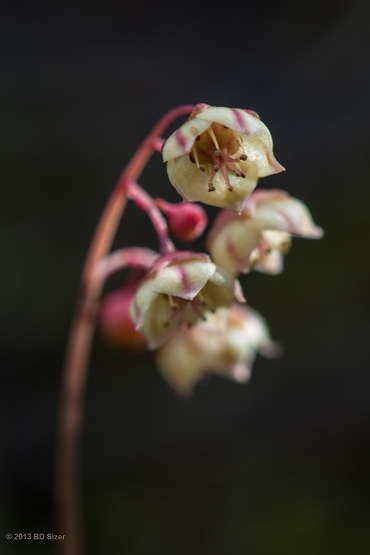See how these plants change in shape and colour through the seasons.
All pictures taken on farm Aasvoelbos , northwest of Matjiesfontein.
Author: Frans Noltee
Dioscorea hemicrypta
Like its better known sibling D. elephantipes, this species is often difficult to find in the wild. This is not because the plants are small, but because they are usually hidden in rather dense vegetation. In the case of D. hemicrypta it is usually the bluish-green colour of the leaves that gives the plant away.
Hemicrypta refers to the half-underground caudex, which is taller than wide. The plants are found on dry stony slopes from the Richtersveld to the Little Karoo.
Pictures taken along the road from Calitzdorp to Matjiesvlei.
Nrs 3 and 4 show the same plant, growing on the roadside and therefore easily visible.
Lied ohne Worte 2
Lied ohne Worte 1
Ruschia lineolata
Yesterday for the first time I took a serious walk in the Montagu Nature Garden. One of the interesting plants I came across is shown here. The first question when one comes across a plant looking like this is always: is it a Ruschia or is it an Antimima? Last years’ fruit pointed in the direction of Ruschia, so that is where I started. For me and -I suppose- most other people, reading dozens of plant descriptions is not a favourite pastime. After going through the specialized literature without any luck, I decided to turn to one of the most excellent fieldguides I know :”Plants of the Little Karoo” by Jan Vlok and his wife Anne Lise. As soon as I saw their picture of Ruschia lineolata I got the feeling that this was it. But of course one still has to check and double check and fortunately all the written information I found fitted in.
“Lineolata” means bearing fine lines, referring to the beautifully striped petals.
The plants form mats up to 1 m across and because of their abundant flowering this looks like a great garden subject in an appropriate climate.
Euphorbia celata
Most of the biomass in these plants is underground. Graham Williamson in his beautiful book “Richtersveld; the enchanted wilderness” has the following to say: “E. celata is a curious Namaqualand endemic which makes up for its lacklustre appearance by its botanical uniqueness. It grows almost secretly in hidden cracks in orange sandstone and is very difficult to detect.”
Plants photographed near Lekkersing 12 July 2011.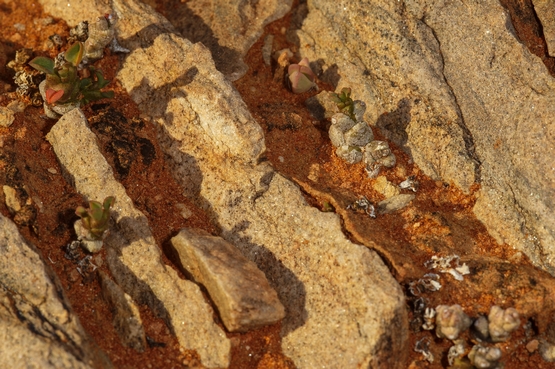
Crassula atropurpurea v. cultriformis
One of the joys of looking for plants in the wild is the fact that you keep making new discoveries. Not earth-shattering ones, but things like a certain species in an unexpected place, an early flowering specimen or one that is much bigger than the ones you know, fruits you see for the first time etc.
Often you come across a plant which you can not identify but which is similar to ones you know, so you have some idea in what direction you should look to find out what it is. Especially when it has one or more striking characteristics, it is easy to convince yourself you will have no problem getting an ID, but sometimes you’re in for a surprise.
The subject of this post is a case in point.
When I saw the plants in the first two pictures, I was so taken by the beautiful and most unusual colour of the leaves that I supposed this aspect would quickly lead me to the proper name. Well, not quite.
For a while I thought they might represent an aberrant form of either C. nudicaulis or C. brevifolia, but the differences were too big.
It took me 3 years to get the right brainwave: throw the names “Crassula” and “Port Nolloth” at Google and see what it comes up with. And BINGO, there it was in a recent article in Avonia by my friend Gerhard Wagner from Berlin.
Amongst many other things he says the following:
“It is remarkable that H. R. Toelken in the Flora of Southern Africa (1985, p. 221) mentions extreme forms of C. atropurpurea v. cultriformis from the coastal area north of Holgat River with much smaller leaves. Such plants, with highly succulent, almost round leaves, we also found south of Port Nolloth at Mc Dougall’s Bay, almost on the beach. Including these plants in C. atropurpurea v. cultriformis seems strange and difficult to understand because of the great differences in habit. It is peculiar that these plants, although they are easily accessible and should be well known, have not been investigated more closely and hardly any mention of them has been made in the literature.”
The first two pictures were taken at McDougall’s Bay, 5 Sept. 2010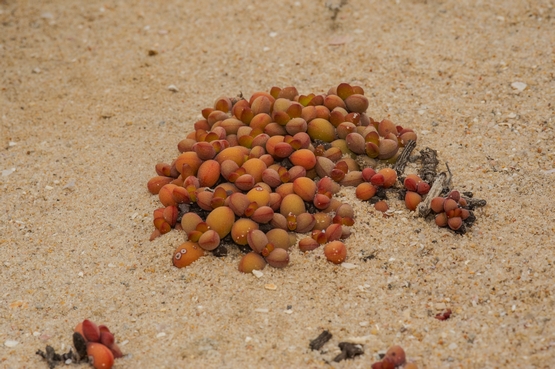
The next two are from the same place, 5 Oct. 2011
The last two were taken 8 Sept. 2010 and show the more conventional form of this variety in a more usual habitat (slopes with quartz gravel).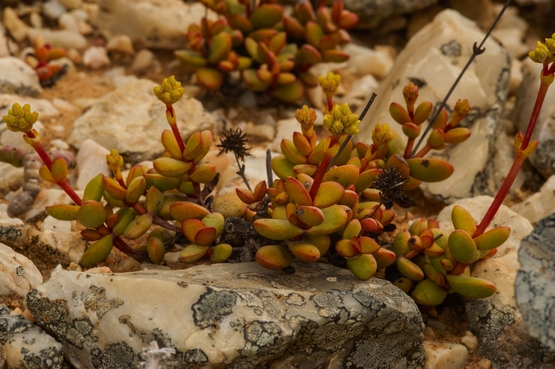
Cotyledon cuneata
Conophytum obscurum ssp. vitreopapillatum
Crassula umbella
This is a member of an interesting little group of tuberous Crassulas. It occurs from the Richtersveld to the Little Karoo, usually on south-facing (shadowy) slopes under shrubs and especially under overhanging rocks.
The flowers appear in July to September and are described as star-shaped and white to yellowish green.
That is exactly as I always saw them in the wild, so that was the image that was imprinted on my brain.
A few weeks ago my wife and I went for a short drive in the area and to the northeast of town I found quite a few plants that looked like C. umbella but with rather different flowers.
The plants clearly belonged in the same group as C. umbella, so I looked up the relevant descriptions, but none of them fitted.
Obviously I had been to hasty, for when I started to reread the descriptions the problem was soon solved. The Flora of Southern Africa, vol. 14, by H. R. Toelken, says : “C. umbrella is a very variable species with several local forms ………………………………….
3. From Montagu westwards to near Worcester plants tend to have ovate corolla lobes with an acute to acuminate apex and slightly longer squamae. The somewhat larger flowers are cup-shaped and usually more or less turned downwards.”
As the following pictures show, this description fits the plants near Montagu to a T.
For the last picture I moved the camera slightly to get a darker background, so that the beautiful little flowers stand out better.
